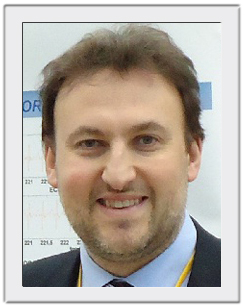Giuseppe ANDREONI
 Giuseppe ANDREONI
Giuseppe ANDREONI
(Politecnico di Milano)
Giuseppe Andreoni received the Laurea Degree in Electronic Engineering in 1993 and the PhD in Biomedical Engineering in 1998 at the Politecnico di Milano, where he is associate professor at the Industrial Design Faculty and Department.
Actually he is coordinator of the Sensibilab (Biomedical Sensors and Systems Lab.) and of the LyPhE (Laboratory of Physical Ergonomics) at the Design Dept. of the Politecnico di Milano.
He has a solid experience in the field of the biomedical and communication technologies applied to medicine and rehabilitation, and ergonomics with specific attention to the User-Centred-Design and Design-for-All philosophies. In particular, in biomedical technologies he is expert in transducers and optoelectronic systems for motion analysis, in biosignal recording and processing, in the development of experimental models and procedures for data analysis (algorithms and new methodologies for data interpretation).
His main job fields are: ergonomics, wearable sensors, rehabilitation and assistive technology.
He is co-author of 9 national/international patents and more than 200 publications (books, chapters, papers and proceedings in international conferences).
His activity concerns the development of innovative methodologies and models in medicine and rehabilitation.
Particularly the main details for each line are the following:
- In rehabilitation he is exploring and applying technologies and methodologies for the functional evaluation of the mobility of the human motion, for the comparative evaluation of antidecubitus cushions for wheelchairs through the analysis of the pressure maps; this last activity also extends to the study of the office chairs, the insoles for footwear and the bicycle saddles.
- He is coordinating a small research team on the BCI (Brain Computer Interface) and its application in domotics and rehabilitation.
- the study of ergonomics, anthropometry, postures and movements is investigated through the development of experimental protocols and methodologies for the physical interaction assessment based on biomechanical parameters; this work represents also the starting point for designer in concept development and for innovative applications in virtual prototyping.
- He collaborated to the preparation, execution and analysis of the experiments on board of the MIR space station during the mission EUROMIR ' 95, in the T2 and T4 projects to study the motor behaviour and the modifications of the human body in microgravity.
In the field of the acquisition and processing of biological signals for the analysis and the monitoring of the psycho-physical capabilities, through the development of innovative methods and instruments.



